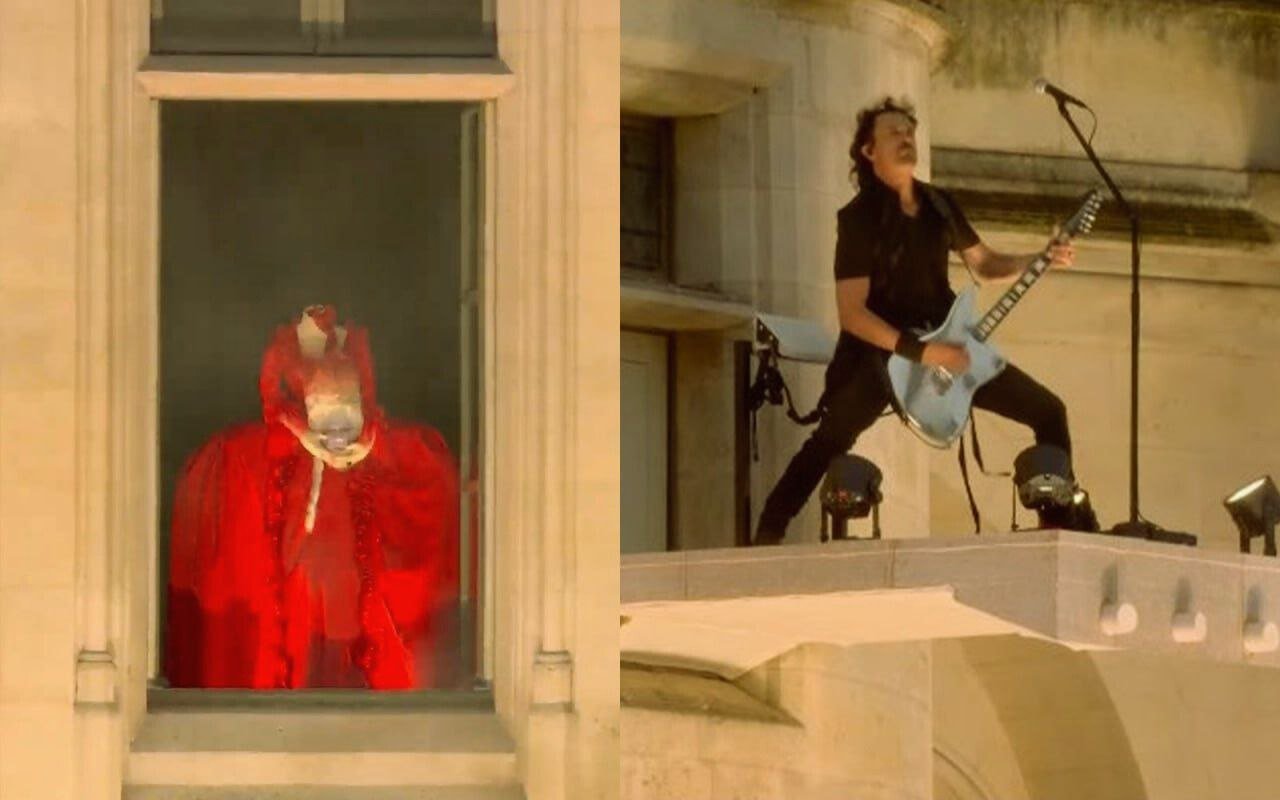
Contents
The Birth of Slim Shady: Origins and Early Impact
In the late 1990s, the music world witnessed the emergence of an enigmatic figure known as Slim Shady, the peroxide-blond alter ego of Detroit rapper Eminem. This character was born out of a combination of Eminem’s personal struggles, creative ingenuity, and a desire to push boundaries. Slim Shady first came to life with the release of ‘The Slim Shady LP’ in 1999, an album that not only marked Eminem’s breakthrough into the mainstream but also left an indelible mark on the rap industry.
Eminem, whose real name is Marshall Mathers, crafted Slim Shady as a way to channel his darker thoughts and frustrations. The alter ego allowed him to explore themes and narratives that were often provocative and controversial, setting him apart from his peers. ‘The Slim Shady LP’ was a critical and commercial success, debuting at number two on the Billboard 200 and going on to win a Grammy Award for Best Rap Album. The record’s success was fueled by its raw and unfiltered lyrics, which provided a stark contrast to the more polished and mainstream-friendly rap music of the time.
Key tracks like “My Name Is” and “Guilty Conscience” showcased Slim Shady’s penchant for shock value. The lyrics were unapologetically explicit, touching on topics such as drug use, violence, and social taboos. This approach garnered significant media attention and sparked widespread debate about the boundaries of artistic expression. While some critics condemned the content as offensive and inappropriate, others praised Eminem for his fearless storytelling and boldness in addressing uncomfortable subjects.
The initial public and media reactions to Slim Shady were mixed. While many were taken aback by the explicit nature of the lyrics, there was also a considerable segment of the audience that resonated with Eminem’s raw honesty and unique voice. This dichotomy played a crucial role in cementing Slim Shady’s place in music history, as the character became both a symbol of rebellion and a lightning rod for controversy.

Slim Shady’s Influence on Hip-Hop and Popular Culture
Slim Shady, the peroxide-blond alter ego of Eminem, has undeniably left an indelible mark on hip-hop and popular culture. Emerging in the late 1990s, Slim Shady introduced a provocative, raw, and often controversial style that pushed the boundaries of lyrical content and performance. His unapologetically explicit lyrics and dark humor tackled taboo subjects, challenging the norms of what could be expressed within the genre. This audacity resonated with a broad audience and inspired a wave of artists to adopt a more unfiltered, candid approach in their music.
Artists such as Tyler, the Creator and Kendrick Lamar have cited Eminem’s Slim Shady persona as an influence on their work. Tyler, the Creator’s early music, with its shock value and dark themes, mirrors the provocative nature of Slim Shady’s lyrics. Similarly, Kendrick Lamar’s storytelling prowess and willingness to explore complex and often uncomfortable social issues reflect the legacy left by Slim Shady. These artists, among others, have contributed to the evolution of hip-hop by incorporating elements of Slim Shady’s boundary-pushing style into their own unique voices.
Furthermore, Slim Shady’s impact on the perception of authenticity in hip-hop cannot be overstated. At a time when the genre was dominated by narratives of street credibility and lived experiences, Slim Shady brought a new dimension to authenticity by embracing his outsider status. His persona blurred the lines between reality and performance, challenging listeners to reconsider what it means to be “real” in hip-hop. This shift opened the door for a diverse array of artists to express their individuality without adhering strictly to traditional hip-hop archetypes.
The reception of Slim Shady’s persona varied significantly across different demographics. While some hailed him as a lyrical genius and a revolutionary figure, others criticized his content as offensive and harmful. Despite the polarizing views, Slim Shady’s influence on both hip-hop and popular culture is undeniable. He not only expanded the lyrical and thematic possibilities within the genre but also contributed to a broader cultural conversation about freedom of expression and the role of art in society.
Controversies and Criticisms: The Dark Side of Slim Shady
Slim Shady, the peroxide-blond alter ego of Eminem, has been a magnet for controversies and criticisms since his debut. The character’s explicit lyrics and provocative themes have sparked outrage among various groups, including parents, politicians, and advocacy organizations. Slim Shady’s content often delves into violence, substance abuse, and misogyny, prompting backlash and widespread condemnation. The alter ego’s penchant for shock value has led to numerous protests, lawsuits, and intense media scrutiny.
One of the most notable incidents occurred in 2000 when the album “The Marshall Mathers LP” was released. The record featured tracks that were deemed offensive and inappropriate by many. Songs like “Kim” and “Kill You” drew severe criticism for their violent and graphic content. The Gay & Lesbian Alliance Against Defamation (GLAAD) also condemned the album for its homophobic slurs, leading to protests and calls for boycotts.

Parents and educators have been particularly vocal about the negative influence of Slim Shady on young listeners. Concerns about the impact of the alter ego’s explicit lyrics on impressionable minds led to numerous school bans on Eminem’s music and public discussions on the need for stricter content regulations. Politicians, too, have weighed in, with figures like Lynne Cheney, wife of former Vice President Dick Cheney, publicly denouncing Eminem’s work as harmful to society.
Despite—or perhaps because of—the controversies, Slim Shady has remained a central figure in Eminem’s career. Eminem has often defended his creation, arguing that Slim Shady allows him to explore dark and complex themes in a fictional context, providing a form of catharsis and social commentary. However, he has also acknowledged the problematic aspects of his alter ego, reflecting on the fine line between artistic expression and irresponsible content.
The dark side of Slim Shady, while contentious, has undeniably played a significant role in shaping Eminem’s legacy. The controversies have not only highlighted the power of music to provoke and challenge societal norms but have also sparked important conversations about the responsibilities of artists in the public sphere.
The Evolution and Legacy of Slim Shady
Throughout his career, Eminem’s alter ego, Slim Shady, has undergone significant transformations, mirroring the artist’s own personal and professional growth. Initially introduced on the 1997 EP, “Slim Shady,” and fully realized in the 1999 album, “The Slim Shady LP,” this peroxide-blond character served as a conduit for Eminem’s most controversial and provocative narratives. Slim Shady’s unapologetically raw lyrics and dark humor allowed Eminem to tackle themes of violence, addiction, and societal critique with a uniquely abrasive edge.
As Eminem’s career progressed, his relationship with Slim Shady became increasingly complex. The 2000 release of “The Marshall Mathers LP” solidified Slim Shady’s role as an emblem of counterculture defiance, but it also marked the beginning of Eminem’s struggle to balance his multifaceted persona. Periods of personal turmoil and public scrutiny led to moments where Eminem distanced himself from Slim Shady, as heard in albums like “The Eminem Show” and “Encore,” where the focus shifted towards more introspective and autobiographical content.
However, Slim Shady’s influence never truly waned. In 2009, Eminem’s “Relapse” saw a notable re-embrace of the character, albeit with a more refined and sober perspective. This return was both a nod to longtime fans and a testament to Slim Shady’s enduring relevance. The subsequent “Recovery” album further illustrated Eminem’s duality, blending Slim Shady’s brashness with Marshall Mathers’ vulnerability. In later works, such as “The Marshall Mathers LP 2” and “Kamikaze,” Slim Shady continued to make appearances, reaffirming his place in Eminem’s artistic identity.
The legacy of Slim Shady is multifaceted, leaving an indelible mark not only on Eminem’s career but also on the broader landscape of music. As an alter ego, Slim Shady pushed boundaries, challenged norms, and provided a platform for raw expression that resonated with audiences worldwide. Eminem’s ability to navigate and reinterpret this persona over the years has cemented Slim Shady’s place as one of the most iconic figures in music history, embodying the perpetual struggle between chaos and control, rebellion and redemption.
OUR SITE: toinewsalert.com





